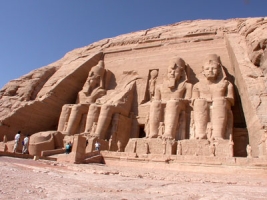Preserving and Promoting the Heritage

UNESCO has a broad program active in preserving World Heritage sites; sites that belong to all the peoples of the world, irrespective of territories.
World Heritage
Heritage is our legacy from the past, what we live with today, and what we pass on to future generations. Our cultural and natural heritages are both irreplaceable sources of life and inspiration. UNESCO encourages the identification, protection and preservation of cultural and natural heritage around the world considered to be of outstanding value to humanity.
UNESCO’s World Heritage mission is to:
- Encourage countries to sign the World Heritage Convention; nominate sites within their national territory; establish management plans and set up reporting systems on the state of conservation of their World Heritage Sites;
- Help national governments to safeguard World Heritage properties by providing technical assistance and professional training;
- Provide emergency assistance for the World Heritage sites in immediate danger;
- Carry out public awareness activities for World Heritage conversation;
- Support participation of the local population in the preservation of their cultural and natural heritage;
- Encourage international cooperation in the conservation of our world’s cultural and natural heritage.
Intangible Cultural Heritage
Transmitted from generation to generation, intangible cultural heritage, such as performing arts and oral traditions, is constantly recreated by communities in response to the variations in their conditions of existence. By safeguarding intangible cultural heritage, UNESCO sustains people’s sense of identity and continuity; it helps develops cultural diversity and human creativity.
Tangible Heritage
These are sites that bear witness to multiple cultural identities, are representative of minority cultural heritages and are of founding significance. UNESCO tries to preserve such sites and protect the ones that or are in imminent danger of destruction.
The World Heritage Pact
Partnerships for Conservation Initiative (PACT), launched at the end of 2002, is an approach to conserving World Heritage by involving a network of companies, foundations, conservation and research institutions, as well as media organizations interested.

